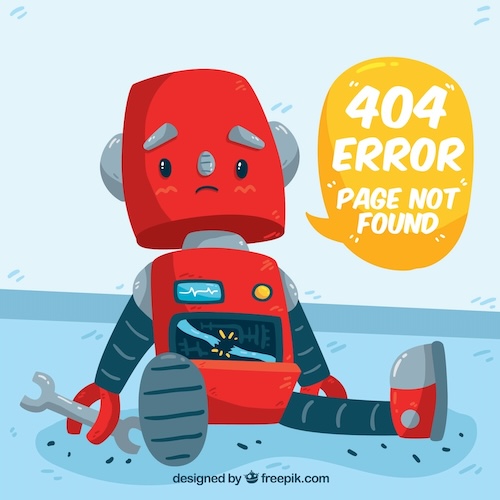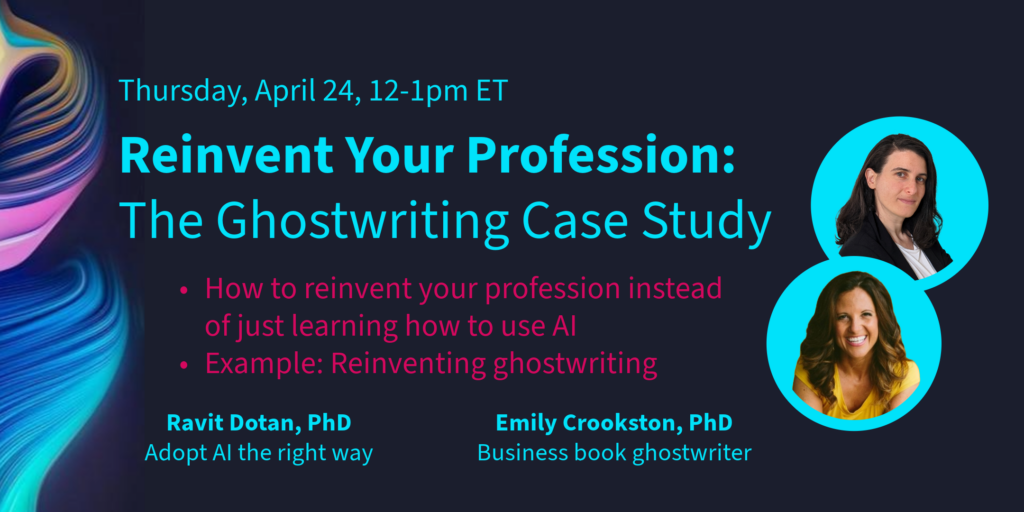
Last week, I was on a Zoom call with Megan, an executive coach with 15 years of experience and a book idea that had been percolating for at least 10 of those years. Together we scrolled through her AI-generated book outline, so I could see all the sections.
“Does this sound like you?” I asked after reviewing it.
Megan’s shoulders slumped slightly. “Well… not really. I wouldn’t use words like ‘paradigm’ or ‘leveraging strategic narratives.’ That’s not how I talk.”
And there it was—the exact same issue I’ve been hearing about from other authorpreneurs who try using AI to outline their business books.
The outlines kinda suck.
Harsh? Maybe. But it’s true. And it’s not even the AI’s fault.
Here’s the thing: you can prompt-engineer until you’re blue in the face, and ChatGPT or Claude (my preferred AI) still won’t produce an outline that truly feels like you.
This has been bugging me for a while, so I asked AI adoption advisor, Ravit Dotan, to help me break down exactly why AI struggles with this particular task—and what we can do about it. In the process of working through this challenge, something magical happened: Together, we completely reimagined what ghostwriting means in the age of AI (you’ll hear more about this in my next blog).
I’d love to explore this with you:
- Join Ravit and me for a conversation about reinventing professions on April 24
- If you’re thinking about using AI to write a business book, you’re welcome to have a 1-on-1 conversation with me. You can schedule it right here.
- You are also welcome to a 1-on-1 conversation with Ravit about reinventing your specific profession. Sign up here!

Now let’s get back to why AI can’t outline your book.
The Generic Outline Problem (And Why Advanced Prompting Won’t Save You)
It started innocently enough. When ChatGPT first burst onto the scene, I watched as business owners flocked to it with their book ideas.
“Create an outline for a business book about leadership,” they’d type, expecting magic.
And what they got was exactly what you’d expect—a painfully predictable structure with chapters like:
- Chapter 1: Understanding Your Leadership Style
- Chapter 2: Building Effective Teams
- Chapter 3: Communication Strategies
- Chapter 4: Navigating Change
Snooooozzzzzeeeee.
This outline could belong to literally thousands of leadership books already on the market. There’s nothing differentiated about it, nothing that makes it distinctly yours.
But okay, you think, I just need to get better at prompting!
So you spend hours reading about prompt engineering, maybe paying for a list of prompt templates, or signing up for a bunch of freebies.
That was Alex’s plan of attack. Alex, a consultant who specializes in crisis management, showed me a prompt she’d crafted that was over 1,000 words long. It included her background, philosophy, examples of her work, and excerpts from blog posts she’d written.
“This has to work,” she told me confidently.
The outline it produced was better than a generic one, for sure. But it still had two fatal flaws:
- Buzzword Bingo took over. AI has been trained on thousands of business books and articles, so it defaults to the language patterns and terminology it has seen most often. Alex’s outline was peppered with phrases she would never actually use with her clients.
- The Vague Phrasing Problem crushed her momentum. AI gives you chapter headings and bullet points that sound fine in the moment but leave you completely lost when you sit down to actually write. What exactly does “Building Better Systems” mean in the context of your expertise?
The Missing Angle and Voice Issue
This brings me to the biggest issue: the angle.
As I’ve been playing around with using AI with my clients to help them develop their book ideas before I start writing, I kept hitting a wall with the AI tools I’ve been using.
I noticed that Claude was great at giving me balanced, middle-of-the-road perspectives. But my clients are not balanced, middle-of-the-road folks. They are rebels, renegades, and mavericks. They have built a business proving that the current approaches are dangerously (in some cases) insufficient. We want to challenge the status quo, not reinforce it.
That’s precisely the problem. Your book’s angle is your unique perspective on your topic. It’s not just what you’re writing about, but the specific stance you’re taking. It’s the “so what?” factor that makes readers care.
An outline without a clear angle is like a map without a destination. You might have a structure, but you don’t know where you’re heading.
Even the most sophisticated GPT designed specifically for book outlining will struggle to capture your angle because—and this is crucial—it doesn’t know what you stand for.
And then there’s the voice issue. When your outline doesn’t reflect your natural language patterns, writing from it feels like wearing someone else’s shoes. They might fit, but they just don’t feel right.
“But what about custom GPTs?” you might be thinking. “Can’t I just add my content in and create a chatbot that knows my voice and angle?”
This is exactly what I’ve been hoping for. I added my book and a dozen of my blog posts to create a Blog Writing Apprentice Agent. I’ve been experimenting with my new writing apprentice.
The results are… better. The voice is closer. The topics it suggests, more relevant. But it still feels like a simulation of me, rather than an authentic expression. It’s like looking at a portrait that resembles me but somehow misses capturing my essence.
What I’ve gotten so far is close, but not quite. And in book writing, “close but not quite” is the difference between a book that resonates deeply with readers and one that feels vaguely inauthentic. It’s the difference between never wanting to stop talking about your book and being slightly embarrassed that your name is on that book.
The Human Element: What AI Can’t Replace
There’s something magical that happens when a human ghostwriter sits down with an expert to outline their book. Through conversation, questioning, and deep listening, we can extract not just the content but the conviction behind it.
I remember the first time I saw this in action with a client named Dan. We’d been talking for about an hour about his approach to business exit strategies for small businesses when suddenly he sat up straighter and his eyes lit up.
“The thing is,” he said, leaning forward, “most leaders are so focused on building high-performing teams that they forget to build deeply connected teams. And that connection is what creates resilience when things get tough. It’s one thing that makes your business highly valuable to investors.”
At that moment, I saw his whole book take shape. Not because he gave me a perfectly crafted outline, but because I could see what made him come alive—the conviction behind his expertise.
I can spot when you light up talking about a particular idea, or when you use a specific metaphor that perfectly captures your thinking. I can mirror your language patterns back to you, helping you recognize your own unique voice on the page.
That human element—that ability to truly see and hear you—is what AI still lacks.
The Solution: A Human-AI Hybrid Approach
This is why I’ve been developing, together with Ravit, a new service that combines the best of both worlds. We sit down with you to discover what you need to overcome your biggest challenges using AI for writing (e.g., getting a usable outline; writer’s block, which is actually ideator’s block). And then build the solution with you.
We’re convinced that this kind of thinking—not just learning how to use AI, but fundamentally reimaging the work we’re doing—is essential for navigating this new technological era.
I invite you to join this exploration:
- April 24th – Join Ravit and me for a conversation about what it means to reinvent professions.
- Authorpreneurs – Book a 1-on-1 session with me to brainstorm using AI to overcome your biggest writing challenges.
- Anyone – Have a 1-on-1 conversation with Ravit about reinventing your specific profession.
Remember, a book outline isn’t just a structure—it’s the skeleton of your Big Idea. Make sure it has your DNA in every bone.
Image by Freepik.com.


